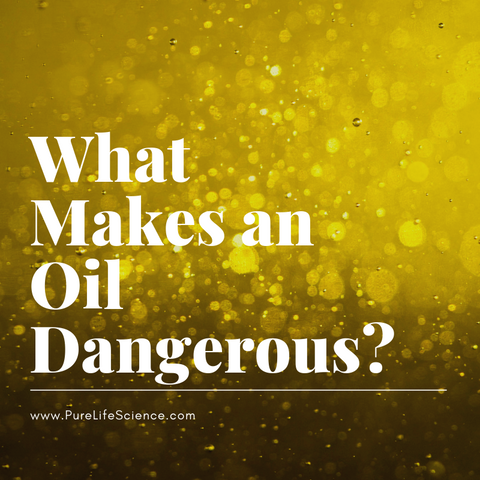What Makes an Oil Dangerous?

For anybody that has been following us here at Pure Life Science, you know we are obsessed with the quality and freshness of our product. I’ve been trying to think of ways to express that fact without resorting to a lot of technical jargon, but that, it seems, is impossible. As some of you may know, I was recently interviewed by Dr. Dan Pompa, a cellular regeneration specialist (find the interview here), and now Professor Brian Peskin has also been interviewed (find the interview here). Both videos provide a plethora of important information, but I want to focus on just one element. In Professor Peskin’s video, he talks about the para-Anisidine or p-Anisidine value. A p-Anisidine value test is used to assess the secondary oxidation of oil or fat, which is mainly attributed to aldehydes and ketones, and is therefore able to tell the oxidation “history” of an oil or a fat.
The p-Ansidine value test is important because your cell membranes are made of these fats, and if they are oxidized, they cannot transport oxygen as efficiently and become “leaky”. Oxidation also affects how the proteins embedded on your cell membrane works. The p-Anisidine value of the average fish oil is seventeen; any number over twenty is considered toxic. Pure Form Omega is one (see purity report here). Also, notice that the report shows that the product contains zero rancidity, fungus, cadmium, lead, arsenic, and mercury. I challenge any other oil supplement on the market today to match these results.
Let’s look at an oil, like Viva Naturals Triple Strength Omega-3 Fish Oil. It is currently Amazon’s best-selling oil supplement. Its p-Anisidine value is 6.1. So even though their number is good, the product still has six times the amount of oxidized fats as Pure Form Omega does. Viva Naturals Triple Strength Omega-3 Fish Oil also has up to three times the amount of mercury, and further contains the wrong fats (DHA and EPA). They don’t even bother to list the amounts of cadmium, lead, and arsenic.
Viva Naturals Triple Strength Omega-3 Fish Oil’s cannot possibly be as fresh as the organic products used in Pure Form Omega. Pure Form Omega is cold-pressed under a blanket of nitrogen with a bubble of nitrogen in each capsule. This means that no preservatives or anti-oxidants are needed. Most will notice a difference within two weeks with proper dosing. With Pure Form Omega, you can feel confident knowing that zero harmful by-products are going into your system.
REFERENCES
Pompa, D. [Dr. Daniel Pompa]. (2017, September 29). Is Fish Oil Dangerous? – CHTV 188. Retrieved from https://www.youtube.com/watch?v=j1T9P8HE13c.
Pompa, D. [Dr. Daniel Pompa]. (2017, December 1). Part 2: The Truth About Fish Oil- CHTV 197 – CHTV 188. Retrieved from https://www.youtube.com/watch?v=JoL9bkqFwFg.
